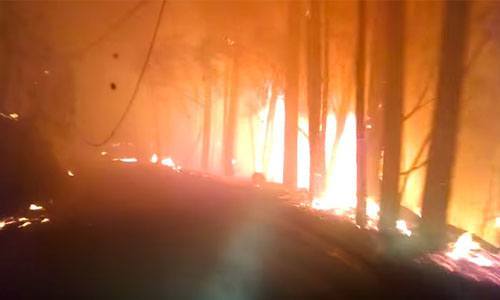
California ‘Firestorm’ Scorched Area Twice the Size of Manhattan in 24 Hours

It’s officially one of the most destructive fires in California history. The Valley Fire, which ignited in Northern California on Saturday afternoon, scorched 50,000 acres—an area more than twice the size of Manhattan—within 24 hours, according to Napa Valley Patch. It has since grown to 67,000 acres and is only 15 percent contained.
West Coast @TODAYshow viewers: #ValleyFire now 15% contained w/ 585 homes destroyed. We’ll have the latest at 7:00. pic.twitter.com/bh06XzusFm
— Joe Fryer (@joefryer) September 15, 2015
5 hrs after ValleyFire started, gusts climbed to 36mph and the fire spread at incredible rate http://t.co/fae2BIjub8 pic.twitter.com/TXY5170JQB
— Capital Weather Gang (@capitalweather) September 14, 2015
“It’s a true firestorm—extremely fast moving, generating its own weather conditions, and burning literally everything in its path,” Daniel Swain, a climate Earth system scientist at Stanford University, told Climate Central. “The Valley Fire is breaking all the rules in the midst of a fire season that had already rewritten the rulebook. What’s going on in Lake County is a direct manifestation of California’s record-breaking drought, and it’s pretty sobering.”
14 photos that show the devastation wrought by California’s Valley Fire http://t.co/GsIDzHqYrRpic.twitter.com/lbWfQKAB8X — Mashable (@mashable) September 14, 2015
The Valley Fire has devastated California’s Lake County. http://t.co/xVRdJ4eJ5V (Photo: AP) pic.twitter.com/68X2R69j7Q — USA TODAY (@USATODAY) September 15, 2015
Stoked by high temperatures and strong winds, the devastating fire comes amid the state’s epic four-year drought made worse by climate change. Just yesterday, researchers published a study in Nature that found that last winter’s snowpack was the lowest in the last 500 years.

 233k
233k  41k
41k  Subscribe
Subscribe 